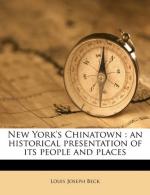|
This section contains 321 words (approx. 2 pages at 300 words per page) |

|
Flourished 1127-1161
Weaver And Embroiderer
Tapestries. Elaborate, detailed embroidery formed a major part of the fabric used to make robes worn by members of the royal family and wealthy individuals in China. It was also used to make other items such as purses, boots, jackets, vests, book covers, and coats. Some of the moreelaborate items of clothing might take several artisans more than a year to complete. This skill was further developed in the creation of silk tapestries (kesi, or carved silk), which were often used in clothing or for decorative purposes; the sewing was so fine that it more closely resembled paintings. Embroidery shops were run by the government of the Song dynasty (960-1279). Most young women, particularly of the wealthier families, were taught embroidery, and a master of this practical art form was Zhu Kerou, who was born in Sungchiang, Kiangsu province...
|
This section contains 321 words (approx. 2 pages at 300 words per page) |

|



